| Common name | Scientific name and subspecies | Range | Size and ecology | IUCN status and estimated population |
|---|
| Babault's mouse shrew
| M. babaulti
Heim de Balsac & Lamotte, 1956 | Central Africa
 | Size: 6–11 cm (2–4 in) long, plus 2–7 cm (1–3 in) tail [10]
Habitat: Forest and inland wetlands [11]
Diet: Insects, as well as small birds and mammals [12] | LC
Unknown  [11] [11]
|
|---|
| Bururi forest shrew
| M. bururiensis
Kerbis Peterhans et al., 2010 | Burundi | Size: 6–11 cm (2–4 in) long, plus 2–7 cm (1–3 in) tail [10]
Habitat: Forest [13]
Diet: Insects, as well as small birds and mammals [12] | VU
Unknown  [13] [13]
|
|---|
| Dark-footed mouse shrew
| M. cafer
(Sundevall, 1846) | Southern Africa
| Size: 6–11 cm (2–4 in) long, plus 2–7 cm (1–3 in) tail [10]
Habitat: Forest
Diet: Insects, as well as small birds and mammals [12] | VU
Unknown 
|
|---|
| Eisentraut's mouse shrew
| M. eisentrauti
Heim de Balsac, 1968 | Bioko island in Equatorial Guinea
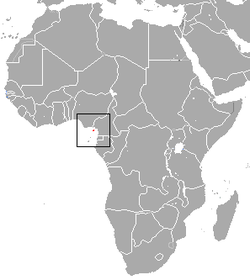 | Size: 7–9 cm (3–4 in) long, plus 3–5 cm (1–2 in) tail [15]
Habitat: Forest [16]
Diet: Insects, as well as small birds and mammals [12] | CR
Unknown  [16] [16]
|
|---|
| Forest shrew  | M. varius
(Smuts, 1832) | Southern Africa
 | Size: 7–9 cm (3–4 in) long, plus 3–5 cm (1–2 in) tail [17]
Habitat: Forest, savanna, shrubland, and grassland [18]
Diet: A variety of invertebrates [19] | LC
Unknown  [18] [18]
|
|---|
| Geata mouse shrew
| M. geata
(Allen & Loveridge, 1927) | Tanzania
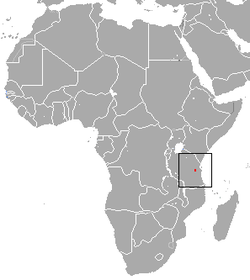 | Size: 6–8 cm (2–3 in) long, plus 4–5 cm (2–2 in) tail [20]
Habitat: Forest [21]
Diet: Insects, as well as small birds and mammals [12] | EN
Unknown  [21] [21]
|
|---|
| Kabogo mouse shrew
| M. kabogoensis
Kerbis Peterhans & Hutterer, 2013 | Democratic Republic of the Congo | Size: 6–11 cm (2–4 in) long, plus 2–7 cm (1–3 in) tail [10]
Habitat: Forest [22]
Diet: Insects, as well as small birds and mammals [12] | DD
Unknown  [22] [22]
|
|---|
| Kahuzi swamp shrew
| M. jejei
Kerbis Peterhans et al., 2010 | Democratic Republic of the Congo
 | Size: 6–11 cm (2–4 in) long, plus 2–7 cm (1–3 in) tail [10]
Habitat: Forest and inland wetlands [23]
Diet: Insects, as well as small birds and mammals [12] | NT
Unknown  [23] [23]
|
|---|
| Kihaule's mouse shrew
| M. kihaulei
Stanley, 2000 | Tanzania
 | Size: 7–9 cm (3–4 in) long, plus 3–5 cm (1–2 in) tail [24]
Habitat: Forest [25]
Diet: Insects, as well as small birds and mammals [12] | EN
Unknown  [25] [25]
|
|---|
| Kilimanjaro mouse shrew
| M. zinki
Heim de Balsac & Lamotte, 1956 | Tanzania
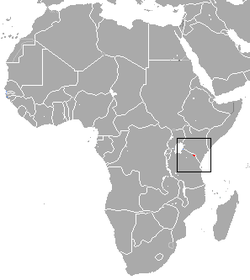 | Size: 8–10 cm (3–4 in) long, plus 3–5 cm (1–2 in) tail [17]
Habitat: Forest, shrubland, grassland, and inland wetlands [26]
Diet: Insects, as well as small birds and mammals [12] | LC
Unknown  [26] [26]
|
|---|
| Long-tailed forest shrew
| M. longicaudatus
Dippenaar & Meester, 1978
- M. l. boosmani
- M. l. longicaudatus
| South Africa
 | Size: 7–9 cm (3–4 in) long, plus 4–8 cm (2–3 in) tail [27]
Habitat: Forest, inland wetlands, and shrubland [28]
Diet: Insects and seeds [28] | EN
Unknown  [28] [28]
|
|---|
| Meester's forest shrew
| M. meesteri
Taylor, Kearney, Kerbis Peterhans, Baxter, & Willows-Munro, 2013 | Southeastern Africa | Size: 6–11 cm (2–4 in) long, plus 2–7 cm (1–3 in) tail [10]
Habitat: Forest and grassland [29]
Diet: Insects, as well as small birds and mammals [12] | LC
Unknown  [29] [29]
|
|---|
| Montane mouse shrew 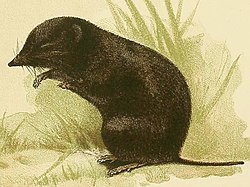 | M. blarina
Thomas, 1906 | Uganda
 | Size: 6–11 cm (2–4 in) long, plus 2–7 cm (1–3 in) tail [10]
Habitat: Forest and inland wetlands [30]
Diet: Insects, as well as small birds and mammals [12] | EN
Unknown  [30] [30]
|
|---|
| Nyika burrowing shrew
| M. gnoskei
Kerbis Peterhans, Hutterer, Kaliba, & Mazibuko, 2008 | Malawi | Size: 6–11 cm (2–4 in) long, plus 2–7 cm (1–3 in) tail [10]
Habitat: Forest and shrubland [31]
Diet: Insects, as well as small birds and mammals [12] | EN
Unknown  [31] [31]
|
|---|
| Oku mouse shrew
| M. okuensis
Heim de Balsac, 1968 | Cameroon
 | Size: 6–11 cm (2–4 in) long, plus 2–7 cm (1–3 in) tail [10]
Habitat: Forest [32]
Diet: Insects, as well as small birds and mammals [12] | VU
Unknown  [32] [32]
|
|---|
| Rumpi mouse shrew
| M. rumpii
Heim de Balsac, 1968 | Cameroon
 | Size: 6–11 cm (2–4 in) long, plus 2–7 cm (1–3 in) tail [10]
Habitat: Forest [33]
Diet: Insects, as well as small birds and mammals [12] | EN
Unknown  [33] [33]
|
|---|
| Schaller's mouse shrew
| M. schalleri
Heim de Balsac, 1966 | Democratic Republic of Congo
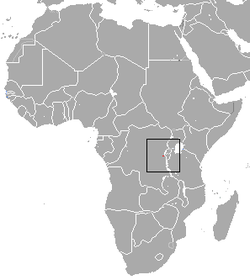 | Size: 6–11 cm (2–4 in) long, plus 2–7 cm (1–3 in) tail [10]
Habitat: Forest [34]
Diet: Insects, as well as small birds and mammals [12] | DD
Unknown  [34] [34]
|
|---|
| Sclater's mouse shrew
| M. sclateri
Thomas & Schwann, 1905 | South Africa
 | Size: 6–11 cm (2–4 in) long, plus 2–7 cm (1–3 in) tail [10]
Habitat: Inland wetlands and forest [35]
Diet: Insects, as well as small birds and mammals [12] | VU
Unknown  [35] [35]
|
|---|
| Thin mouse shrew
| M. tenuis
Thomas & Schwann, 1905 | South Africa
 | Size: 7–10 cm (3–4 in) long, plus 3–5 cm (1–2 in) tail [36]
Habitat: Grassland [37]
Diet: Insects, as well as small birds and mammals [12] | EN
Unknown  [37] [37]
|
|---|






















